Part I
Jul 5 - Sep 1, 2013 Art Space Pool, Seoul
Solo Exhibition : Kim Kyoung-Ho Magic Bullet Broadcasting Network
>>>more
Aug 4 - 18, 2013 Art Space Pool, Seoul
Video Screening : ha cha youn Localization
>>>more
Jul 5 - Aug 30, 2013 Art Space Pool, Seoul
E.T.Lab* : 15 Dialogues with Trans-disciplinary Speakers
Part II
Nov 28, 2013 - Jan 5, 2014
Where the ends meet
Gallery Houg, Lyon
Part III
Dec 14, 2013 - Jan 13, 2014
Art on Farm 2013
Jim Thompson Farm, Bangkok
《Running on the Borders : Inter-cultural Negotiation and Adventures of Thinking》 is a trilogy organized at the institutions with respectively different features in different cultural regions as Seoul, Lyon and Bangkok. The series is not a tour exhibition of the same kind but a trilogy of projects, each planned in a different form and in a different frame.
In the contemporary art world, the great trend is to draw a new geographic landscape surrounding the Asian contemporary art scene. One can quickly understand that the binary opposition setting of domestic/foreign, central/peripheral has now become meaningless in the cultural and artistic circles, just with a glance at such composition of this exhibition planned by a non-profit alternative art space. Even so, there seems to be an illusion created by the art world which narrowly interprets the widely spread interest in Asia as an acclamation for Asian art only.
There are scholars with the view that the first decade of the 21st century begins with the 9.11 terrorists’ attack and ends with 3.11 Fukushima nuclear crisis. They are now unanimously agreeing upon the need for general reexamination of the history of human civilization and preparation for future planning that goes beyond the division of East·West, Western·Non-Western. At this point, the so-called global interest on “Asia” is oriented toward the expectation of transformational epistemology instead of mere Korean Wave or artistic contents. Since the early 90s, the third world regions including Asia had been accustomed to the relative positioning against a certain “center” with the constant post-colonial and postmodern venture of a hectic rhythm. Now these regions are deeply contemplating on the issue.
Before pondering on the global scale of the matter, what on earth does it mean for Asia to depict Asia in an autonomous manner? How can one imagine the topography recognizing the difference between local cultures and their common character in the midst of Asian nation-state order with deep nation-centric and chauvinistic roots? In the reality where we do not even recognize the alterity in our own country, not to mention in Asia, could we ever merely dream of an alternative epistemology of a global scale? What can possibly be the alternative epistemology, way of thinking and sensibility which are different from the Korean versions?
With such frank questions in mind, the series tries to take first steps of this ambiguous but earnest quest. Its goals are not of research on the essentialistic identity of ‘Asian-ness’ or of drawing geographical borders. It is to observe in a critical manner the rigidness of thoughts that are in collusion with excessive nation-centrism set behind the macroscopic border of the nation-state system, at least in the cultural and artistic circles. Challenging thoughts, the shift of thoughts, transformational imagination are the only keywords that this exhibition is attempting to evoke.
The action of recognition is originally an existential condition which resides with the gap and discordance between each other. At this point, the word “communication” stands for the endless process of negotiating with the others and on the surface of such encounters, cognitive performativity can be found creating a“disjunctive speech” expressed by Homi Bhabha. This performativity of such universal and fundamental perception and communication are greatly influenced by conditions of reality which draw all kinds of borders. Under the circumstances in reality where the so-called discourses of trans-boundaries such as openness, détente and global mode are the majority, personal perceptional boundary opens up and the range of thoughts gains leisurely space. In the opposite case, social and psychological boundaries become rigid and so the range of imagination and thoughts decreases. In the early 21st century, the environment of political reality showed the strengthened defensive mode of state-nation boundaries. Accordingly, the fundamental borders of ethnic group, race, religion and social class, etc. have rapidly resurrected and they show signs of tightening their internal solidarity with chauvinism which separates the border of perception, in and out. This strong resurrection of macroscopic boundaries oppresses the borders of thoughts and imagination.
The role played by the discourse of trans-boundaries, inter-regional trans-cultures, interdisciplinary communication is to remind us, stimulating our human perceptional limits and maintaining the border of perception in a flexible manner. The discourse itself cannot actually negate the solid boundaries inherent beneath. Furthermore, the contact of borderlines between local-global, one’s own national culture and other regional culture has not overcome the tremendous differences of actual gaps. It has enabled the discovery of an alternative topography in the domestic social sub-structural topography of boundaries. It has also been the emancipatory exit to give a respiratory break for individuals’ walls of perception. However, the platform of transformational imagination called Asia or global scene has been gradually perceived as a platform of extension where chauvinism and economic logic are allowed to play their roles. Meanwhile, it is being appropriated as the means to open up a market for the export and trade of strange cultural contents mixed with chauvinism and anti-colonialism.
Part 1 presented in Seoul is the platform of experiencing the confusion of reasoning systems to which Korea as Asia has to be accustomed in order to exchange with the other cultures beyond Korea. There will be various experiences of shaking up and turning over thoughts, jumping over expectable premises and looking at the perceptional confusion in a new way, etc. For the diagnosis of such chaotic situation, we need several compasses of alternative perception. Thus there will be various opportunities where interdisciplinary academics of all walks gather together to share their trans-boundary knowledge in Part 1.
Part 2 of the exhibition presented in Lyon, France, deals with the unfamiliar encounters of Asian contemporary artists with traditionally Asian symbols or mental values that the West would have sensed as something “Asian”. These are attempts of excavation and recomposition by rediscovering in the conceptual level the textual signs of “Asia” which are widely used in the global scale. We expect they will be attempts of restoring mental values from the signs that have become subordinate to the system of visual politics.
Part 3 presented in Bangkok, Thailand, is a 4-month project concerned with in situ work based on research of tropical farms of the suburban areas of Bangkok. Contemporary artists based in urban settings, familiar with modern industrial development, will experience encounters with the lifestyle, art, environment of another minority ethnic group in Asia. Such experience of an unfamiliar encounter between neighbor Asians would be a new one, which was not made possible in official academic system. Thus, ironically, it is expected to be the most abrupt and difficult work.
The only realistic action that art can take when reform of politics and education cannot be realized at one stroke, in such situation tangled with regression, hatred and chaos, is to escape from the seizure of the range of thoughts and imagination in the net of reality. Revealing disjunctive speech under the premise of differences existing between regions and expanding the topography of boundaries by continuous adventures of translation and pondering between domestic cultural regions and newly proposing such topography, these are what Running on Borders has set as its challenging task.
Heejin Kim (Director of Art Space Pool)


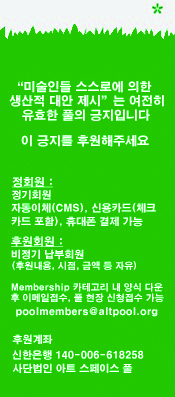

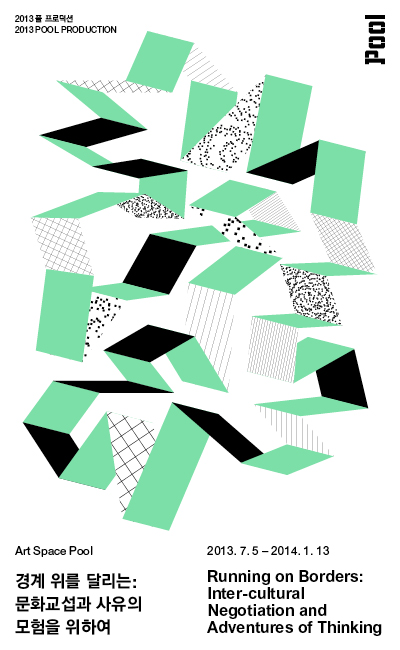 《Running on the Borders : Inter-cultural Negotiation and Adventures of Thinking》Web banner, design : Eunjoo Hong, Hyungjae Kim ⓒ Art space pool
《Running on the Borders : Inter-cultural Negotiation and Adventures of Thinking》Web banner, design : Eunjoo Hong, Hyungjae Kim ⓒ Art space pool
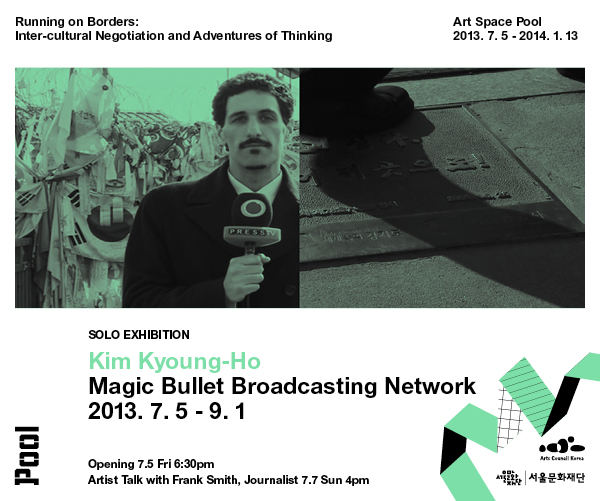 《Running on the Borders》Part 1 Kim Kyoung-Ho Web banner, design : Eunjoo Hong, Hyungjae Kim ⓒ Art space pool
《Running on the Borders》Part 1 Kim Kyoung-Ho Web banner, design : Eunjoo Hong, Hyungjae Kim ⓒ Art space pool
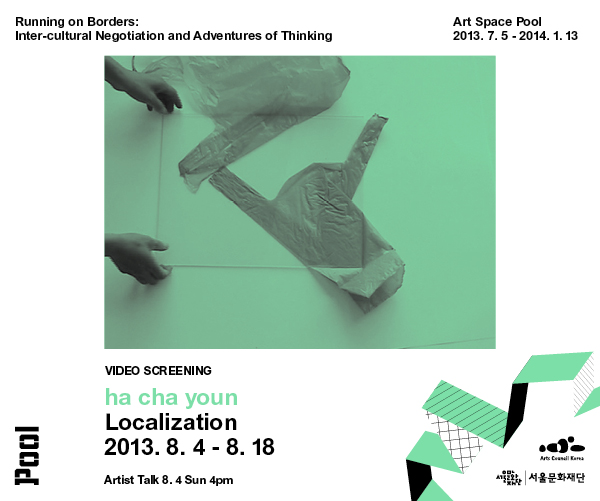 《Running on the Borders》Part 1 ha cha youn Web banner, design : Eunjoo Hong, Hyungjae Kim ⓒ Art space pool
《Running on the Borders》Part 1 ha cha youn Web banner, design : Eunjoo Hong, Hyungjae Kim ⓒ Art space pool
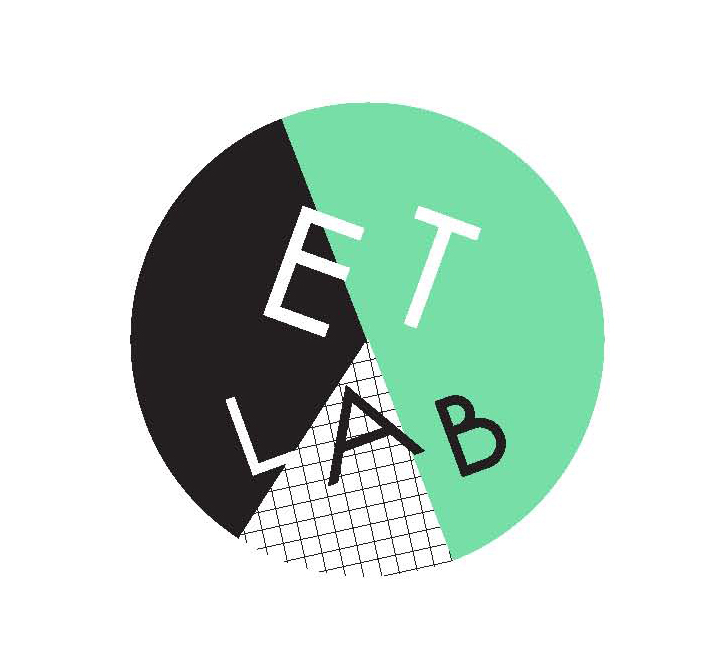 《Running on the Borders》Part 1 ET Lab logo, design : Eunjoo Hong, Hyungjae Kim ⓒ Art space pool
《Running on the Borders》Part 1 ET Lab logo, design : Eunjoo Hong, Hyungjae Kim ⓒ Art space pool








